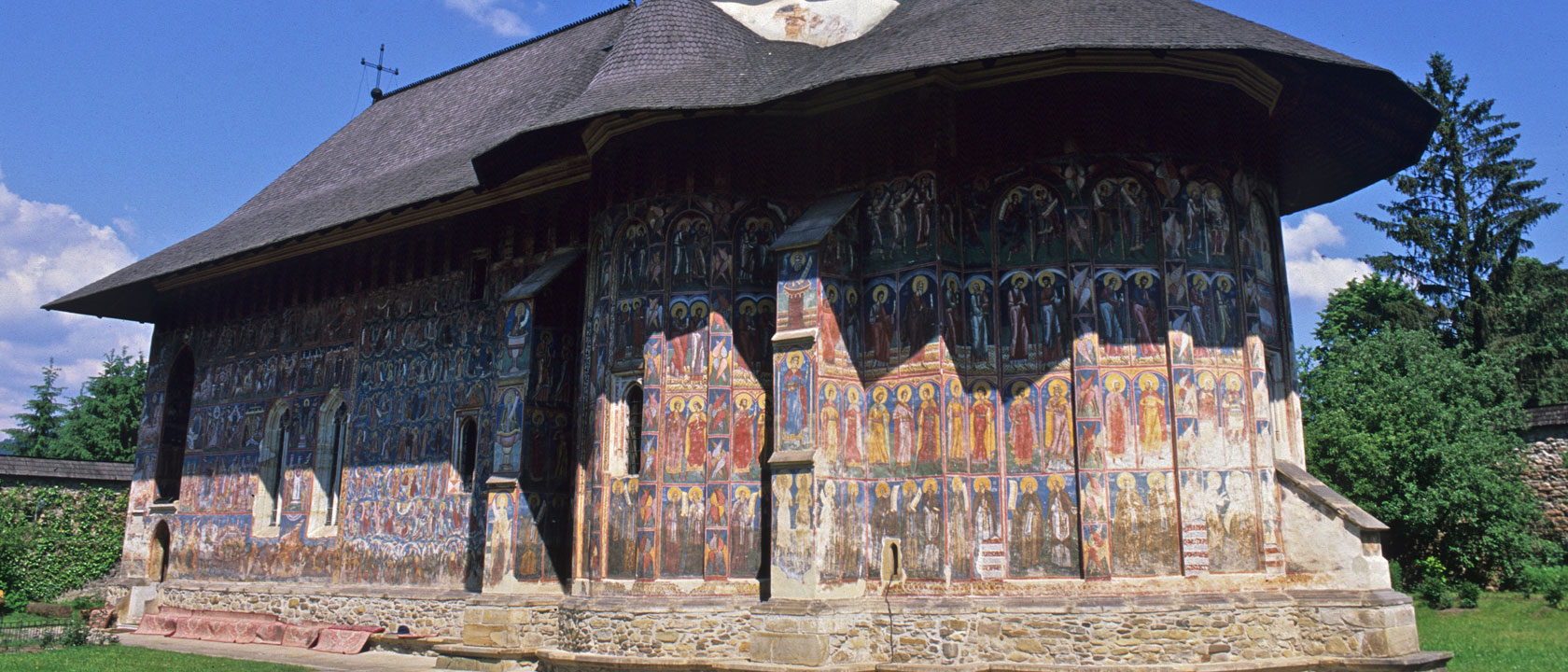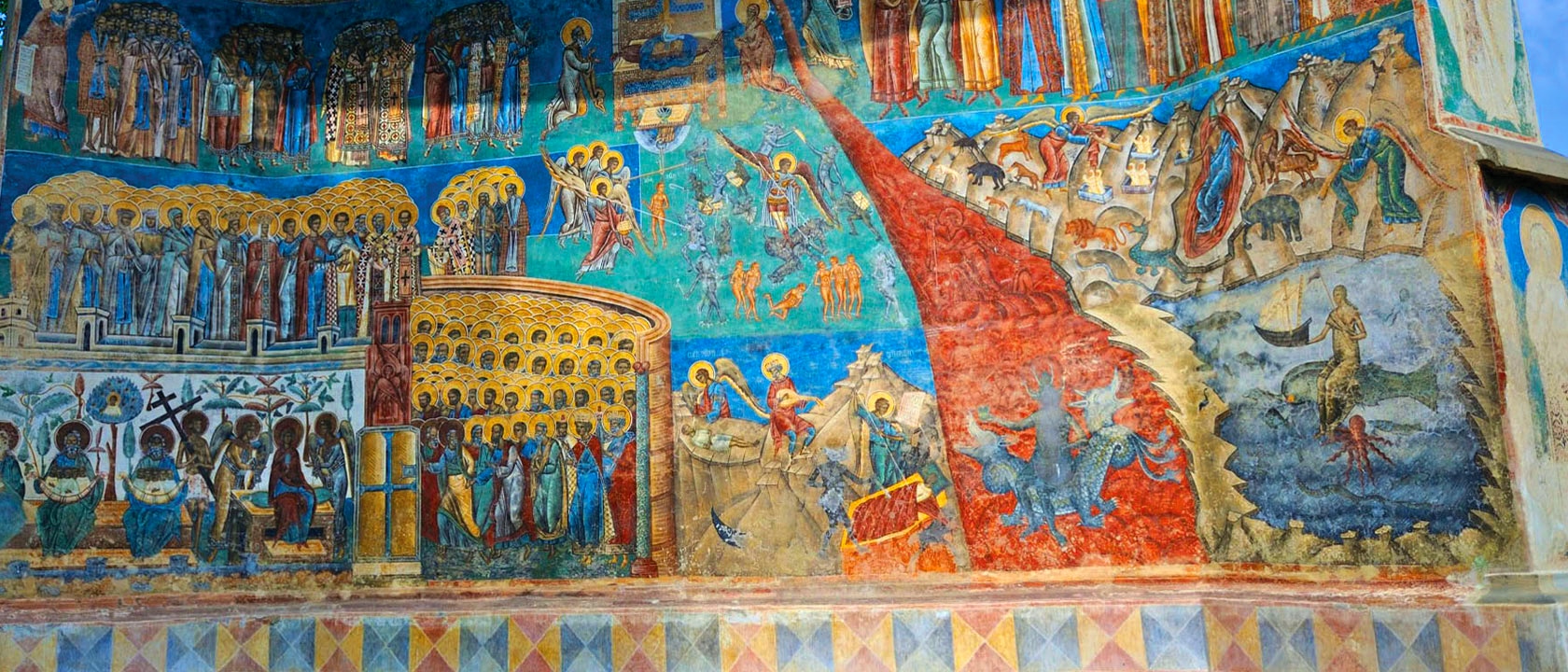Romania Revealed: A Historical Introduction
Romania is one of the most culturally diverse countries in Europe, and therefore one of the most interesting in which to travel. Its diversity stems in large part from the fact that since 1920 Greater Romania has been made up of three quite distinct regions, Wallachia, Moldavia and Transylvania, separated by the high, densely forested Carpathian Mountains Range that curves through the centre of the country. To the south of this range is the Wallachian plain whose southern border is the lower Danube. To the northeast of the Carpathians is the Moldavian plateau, linked geographically to Moldova, the Ukraine, Russia and northern powers like Lithuania. To the northwest is the Transylvanian plateau, which opens in the northwest onto the Danubian basin and Hungary. Each of these regions’ borders is more porous than those they share with each other across the Carpathians and therefore, before unification, the history of each was heavily influenced by the diverse territories it abutted.
Although in antiquity the Romans had dominated and unified the territory of the ancient Dacians, a province roughly similar to that of the modern Romanian nation state, after Rome’s withdrawal and during the chaos of the ensuing millennium Wallachia, Moldavia and Transylvania went their own ways; only for a few years around 1600, were they united under Michael the Brave. Wallachia’s fortunes were influenced by Byzantium, two medieval Bulgarian Empires and by the Ottoman Empire. Forces from the east and the north, such as steppe nomads like the Huns and Mongols as well as medieval Russia and Poland – Lithuania, influenced Moldavia. Transylvania, on the other hand, was absorbed into the territory of the Hungarian crown, and although it managed to preserve some autonomy during the Ottoman hegemony in Hungary, the Habsburg Empire later controlled it. Transylvania, with its geographical links to the west, gained a large Hungarian population, and also an influx of German migrants (11th century). These migrants founded Saxon cities like Sibiu, Sighisoara and Brasov, and built Transylvania’s magnificent fortified churches. Both Hungarians and Germans were Roman Catholic until the reformation, when the Germans became Lutheran. The Moldavians and Wallachians, on the other hand, have remained Eastern Orthodox throughout history.
Whilst Transylvania with its Saxon towns struggled against Hungarian, Ottoman and Habsburg rule, Moldavia and Wallachia in the late-15th and 16th centuries became independent principalities, which maintained a tenuous autonomy by a political balancing act between far greater powers to the north, east and south. Moldavian and Wallachian princes like Alexander the Good, Stefan cel Mare (Stephen the Great) and Petru Rares owed fealty to the Ottoman Empire but managed to maintain a high degree of independence until the 18th century, when as a result of rivalry between the Habsburg and Ottoman Empires, Northern Moldavia (Bessarabia and Bucovina) and Eastern Wallachia (Oltenia) were annexed by the Habsburgs, whilst the Ottomans appointed Greek aristocrats (Phanariots) from the Phanar quarter of Istanbul to rule Moldavia and Wallachia. They did so also in response to increasing aristocratic resistance to Ottoman influence in the two principalities, and also Russian incursions into the Black Sea region.
Throughout the first half of the 19th century, Wallachian and Moldavian aristocrats and intellectuals promoted the idea of Romanian independence. As the Ottoman Empire grew steadily weaker, Moldavia and Wallachia came to be united in the person of Alexander John Cuza, who was elected Prince of Moldavia and then, in 1859, Prince of Wallachia. After Cuza’s fall, Prince Karl of Hohenzollern-Sigmaringen became King Carol I of Romania (ie Wallachia and Moldavia) on 20 April 1866. After World War I the Austro-Hungarian Monarchy was forced to relinquish Transylvania, which had a majority Romanian population, to Romania by the Treaty of Trianon (1920). The Russians also forfeited Bucovina (Northern Moldavia) and Bessarabia at this time, but later regained Bessarabia, now Moldova.
The independent political development of Wallachia, Moldavia and Transylvania, combined with influences of foreign powers, has left its mark on the language, religion, art and architecture of Romania. On this tour we shall contrast the grand Gothic edifices of cities like Transylvania’s Sibiu, Brasov and Cluj, to the extraordinary blend of Byzantine, Serbian, Ottoman and even Persian decoration in Wallachian churches like Curtea de Arges and Cozia, and the Byzantine, Gothic, Italian and Serbia synthesis in the stunningly beautiful painted monasteries of Bucovina. We shall visit small Saxon, Hungarian and Romanian villages and pass those of the enigmatic Székelys, whose origins are not completely known.
We shall also chart the revival of historic styles in the beautiful Brancovan National Style of the 19th century. The amalgamation of Wallachian and Moldavian territories in the first Romanian state, and the establishment of Bucharest as its capital, led to an extraordinary explosion of creative energy in literature, architecture, art, and music; Yehudi Menuhin, a pupil of the famous Romanian composer and violinist George Enescu, claimed that Romanians were the most musical people in the world. We shall explore the art and architecture of this extremely fertile period, when Bucharest, the most important city in the Balkans area, was called ‘Little Paris’. The creation of Greater Romania in 1920 led to a second period of vitality. It produced world leaders in the arts, such as the sculptor Constantin Brâncusi, the Dada poet Tristan Tzara, the Dada artist and modernist architect Marcel Iancu (Marcel Janco), the absurdist playwright Eugène Ionesco, and the great philosopher Mircea Eliade; foreigners often do not realise the huge contribution to world culture of these and many other Romanians. We shall explore the contribution of Romanian modernists in art and architecture, particularly in Bucharest.
The search for national identity led to another extraordinarily rich field of endeavour. One great contrast in Romania is between the country’s sophisticated, cosmopolitan cities and the countryside, where even now centuries-old agricultural practices abound. Despite the growth of her energetic cities, 90% of Romania’s population well into the 20th century were poor peasants, living in villages that were often very isolated. The Romanian peasantry had kept alive rituals and practices, and especially stories, that elsewhere in Europe had been compromised by industrialism and the Enlightenment. When nationalist intellectuals came to search for Romania’s deep past, many found it in this rich heritage of stories, that preserved many medieval elements.
We shall explore the geographical setting of Romania’s rich folkloric tradition in Romania’s agricultural landscapes, which preserve elements that have long been superseded by industrialism elsewhere. We shall visit lovely old villages in the isolated valleys of Maramures where you will see one of the world’s richest patrimonies of old wooden churches, some of them more than 500 years old. Only Russia and Norway can compete with this corpus, but whereas in those two countries ancient wooden buildings are now preserved in uninhabited open air museums, Romania’s wooden churches are still functioning centres of communities.
Of local practices that have survived eons, one eccentricity alone may be noted. As we travel through Maramures you may see in the front gardens of some houses dead trees set up with enamel pots and pans hanging from their branches. This is used to signify that the house in question has available a marriageable daughter. If the pots are a little worn, she may not be just a young thing!
The foregoing description has attempted to characterize the rich cultural complexity of Romania, brought about in part by the separate political development of its three major regions. We should not, however, take this to mean that these regions and their sub-regions like Maramures, were completely isolated from each other. We have already described foreign political and cultural influences. Trade and migration also played their part, and have further enriched Romanian culture. For example, Romania has by far the largest gypsy population in Europe, and you will see something of this people’s contribution to Romanian culture, especially in the field of music. Armenians and Italians have also played their parts, as traders who used Romania as a major conduit for goods from Italian colonies on the Black Sea and from the Near East to Europe. One of the most fascinating aspects of this trade was the passage of vast numbers of Turkish carpets to Northern and Western Europe. Armenian merchants donated many of these carpets to Romanian churches like the Black Church in Brasov, so that arguably Romania has the greatest corpus of rare old Turkish carpets of any country in the world. You will see these carpets decorating churches.
Whilst we shall enjoy Romania’s fascinating historic environment, we shall also see remnants of Ceausescu’s reign, such as the vast palace he built in central Bucharest. We shall also explore Romania’s cultural development since 1989, and the unleashing of energy that this has brought. Romania artistically now rivals its past periods of vitality, in the 19th and early 20th centuries.

 Romania Revealed: Saxon Villages, Transylvanian Cities and Byzantine Monasteries 2025
Romania Revealed: Saxon Villages, Transylvanian Cities and Byzantine Monasteries 2025  Romania Revealed: Saxon Villages, Transylvanian Cities and Byzantine Monasteries 2024
Romania Revealed: Saxon Villages, Transylvanian Cities and Byzantine Monasteries 2024